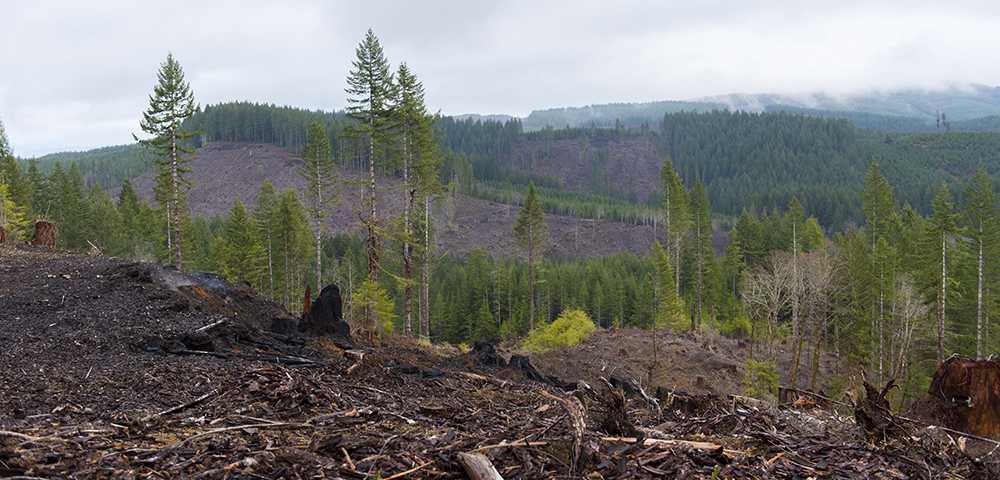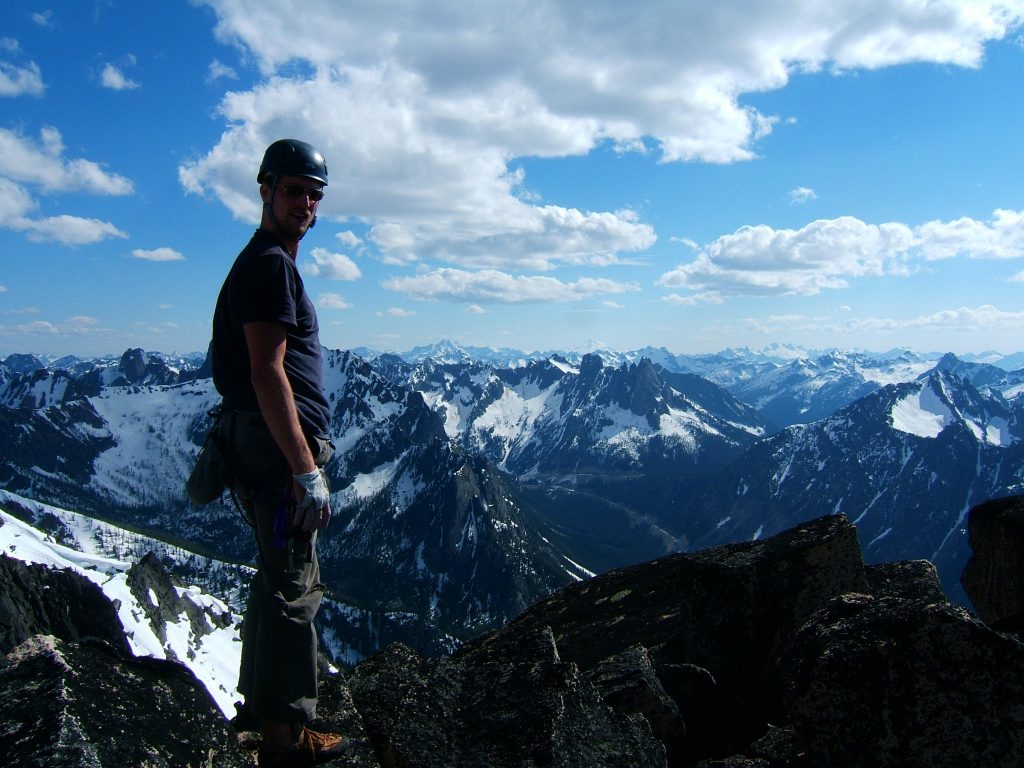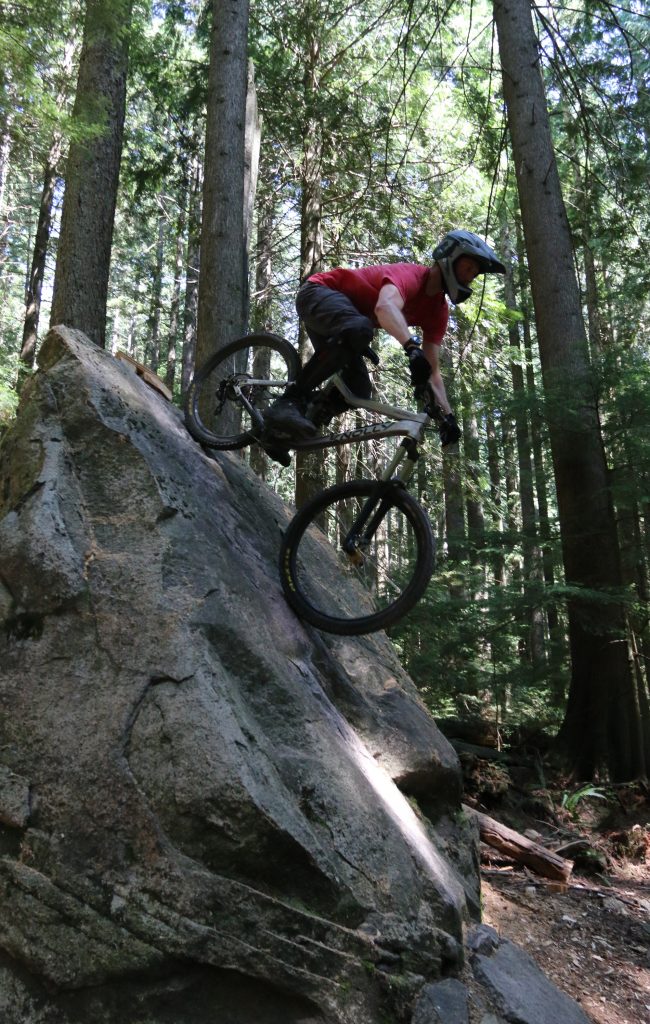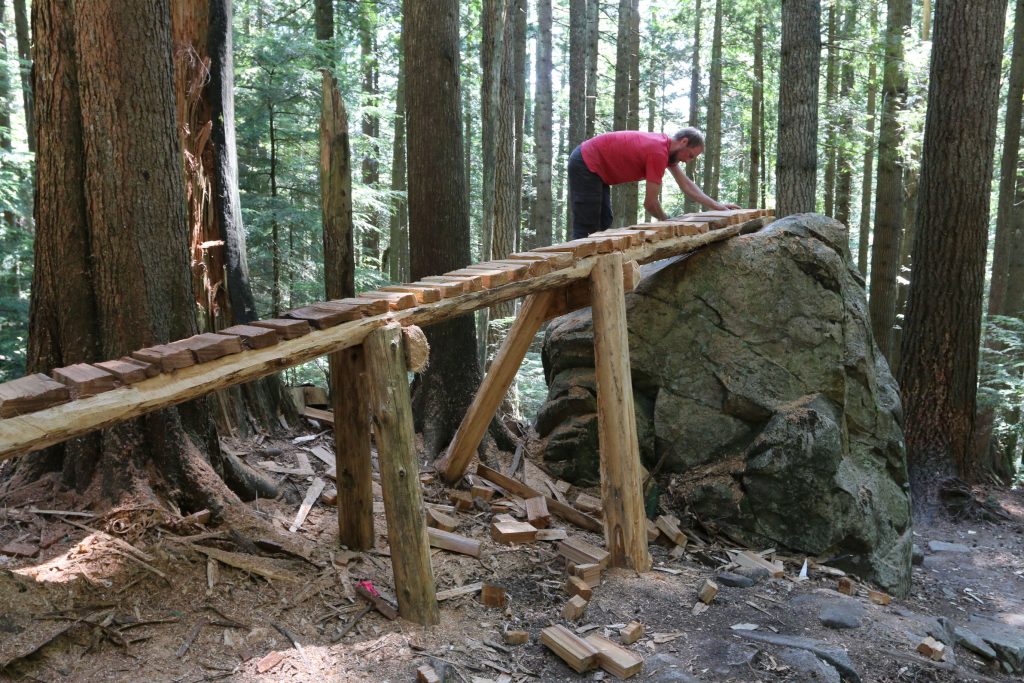
The Oregon State College of Forestry offers six distinct and top-ranked academic programs in a small, friendly environment where students get personal attention and guidance from faculty, staff and advisors.
Career paths take students into a forest, a factory, a laboratory or an office, and graduates leave Oregon State with knowledge and skills that are in demand in both the Pacific Northwest and worldwide.
All programs lead to a Bachelor of Science (BS) degree and allow students to focus on a particular forest landscape or ecosystem area.
FORESTRY
Oregon State is world-renowned for forestry education and research. In this program, students train outside, in forests and with real, cutting-edge technology and equipment. Students graduate with real-world experience, ready to actively plan for, observe and manage the health of the entire forest ecosystem. Graduates often go on to gain employment with either federal or state agencies or private timber companies.
The forestry program offers three options for students to focus on: forest restoration and fire, forest management and forest operations.
FOREST ENGINEERING
Oregon State offers the nation’s only ABET-accredited program in forest engineering. This program emphasizes analytical skills required for evaluating engineering systems and integrates the mechanical and economic requirements of forest operations with the biological requirements of the forest.
Forest engineering students’graduate ready to help meet global demands for wood products while sustaining water, habitat and other forest resources.
Students in this program have the option of a dual major in civil engineering offered in partnership with the OSU College of Engineering.
NATURAL RESOURCES
Oregon State is ranked third in the nation (College Factual) for natural resources education. Students in this program have a working knowledge of a board
span of natural resources, their diversity and interdependence and the critical relationships between humans and the environment. This program is for students interested in an interdisciplinary approach to resource management and a career dealing with land use, water resources, environmental policy, natural resource education and related endeavors.
This program is available at the flagship Corvallis campus, in Bend at OSU-Cascades and online through OSU Ecampus.
RENEWABLE MATERIALS
The renewable materials degree program teaches students how to help the world replace oil-based and other non-renewable materials with plant-based renewable alternatives and shape the future of wood products design and advanced manufacturing.
Students learn how wood, bamboo and other materials can be used to provide housing, consumer products, energy and other benefits to society.
Students in the renewable materials program have four options of study to choose from: art and design, marketing and management, science and engineering and advanced manufacturing.
TOURISM, RECREATION + ADVENTURE LEADERSHIP
The tourism, recreation and adventure leadership (TRAL) degree program prepares students to work in the fast-growing outdoor industry. Courses explore how
people relate to environments and how recreation and natural spaces can work together for the benefit of both the population and land.
Students have four options of study to choose from: adventure leadership education; nature, eco and adventure tourism; outdoor recreation management and sustainable tourism management.
This program is available on the Corvallis campus and at OSU-Cascades in Bend.
AMONG THE BEST IN THE WORLD
Oregon State University consistently ranks among the top in the world for forestry, natural resources, recreation and wood science research. OSU was recently ranked number two in the world in forestry by the Center for World University Rankings and ranked third in the nation for natural resources studies by College Factual.
GRADUATING OUR FUTURE LEADERS
Dedicated to preparing the future leaders of our working forest landscapes, the college awarded 372 undergraduate degrees in FY 2017 and FY 2018.
MAKING OPPORTUNITY AFFORDABLE
Through the generosity of our donors, the college regularly awards more than $500,000 in undergraduate scholarships each year. During FY 2017 and FY 2018, the college awarded more than $1.10 million in undergraduate scholarship support with individual awards ranging from $1,000 to $9,000.
EXPERIENTIAL LEARNING IS KEY
The college prides itself on educating and preparing its students to be competent, innovative and professional members of fields across the forest landscape. Students in all programs are encouraged, and in some majors, required, to complete work experience in their chosen fields. The Mentored Employment Program enables faculty to hire undergraduate students on research and other projects with an expectation of at least one hour of direct mentoring per week. The program supports about 20 students per year.
A PATHWAY TO SUCCESS
The college remains a strong partner with Oregon’s community colleges. In FY 2018, the college entered detailed pathway agreements with Umpqua Community College and Southwestern Oregon Community College. This enables students to find financially accessible pathways to the college’s degree programs.
A GROWING COLLEGE
Since the launch of the college’s recruitment plan in 2017, enrollment has increased. In FY 2018, applications and admitted students to college programs were up almost 20 percent. Traffic to program websites increased by 300 percent over previous years. The college welcomed 174 new first-year and transfer students to its degree programs for fall 2018, a 25 percent increase over the previous year and the largest incoming class in college history.
PARTNERING WITH TRIBAL COMMUNITIES
The college continues to provide leadership and facilitation of OSU faculty, staff, and Tribal partners in the development of a Native American Educational Pathways proposal. The college co-organized and cosponsored the Oregon Indian Education Association’s annual conference, held on the Corvallis campus May 1-2, 2018. In addition, the college is collaborating with OSU colleagues on an Oregon Sea Grant proposal entitled “Engaging Collaborative College Pathways for Native American Youth in Coastal Tribes,” and partners with the Intertribal Timber Council to provide an additional $2,5000 in scholarships to recipients of the ITC Truman D. Picard Scholarships.












